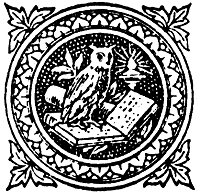ISSN 1750-4953
Marginalia
Home
About Marginalia
Current Issue
Archived Issues
Notes to Contributors
Links to Other Online Journals
Marginalia -- The Website of the MRG
Marginalia
Home
About Marginalia
Current Issue
Archived Issues
Notes to Contributors
Links to Other Online Journals
Marginalia -- The Website of the MRG
Miri Rubin
The Hollow Crown: A History of Britain in the Late Middle Ages
322 pages. Allen Lane, 2005. �25
ISBN: 0 713 99066 X
The Hollow Crown: A History of Britain in the Late Middle Ages
322 pages. Allen Lane, 2005. �25
ISBN: 0 713 99066 X
In the Preface to her most recent book, Professor Rubin explains that the aim of The Hollow Crown is �to share historical reflection, discovery and enthusiasm with those who love and cherish history, but who have not made it their vocation. It is the product of the quarter-century of my life as a historian, but it is not for historians alone.� This is an apt description; The Hollow Crown is not written for those who are already familiar with the events of fourteenth- and fifteenth-century England, but for those who are perhaps coming to the period for the first time, or for those who wish to familiarize themselves with a sketch of that turbulent chapter of English history. For Professor Rubin�s book is an extremely well-executed depiction of late-medieval England, one that is necessarily painted in broad strokes as she works to capture the causes and effects behind the upheaval that characterized the years between 1307 and 1485 (the years to which Rubin has confined herself in this volume).
Rubin constructs her history around a series of depositions, beginning with the events that led up to the abdication of Edward II in 1327 (described in her initial chapter entitled �Famine and Deposition, 1307-1330�) and ending with the triumph of Henry Tudor (Henry VII) at Bosworth in 1485 (described in �Little England and a Little Peace, 1462-1485). Shifting nimbly � though sometimes abruptly � between topics such as �Richard II�s Rule� and �Food � Urban and Rural�, Rubin�s study encompasses nearly all aspects of late-medieval life. She discusses famine and plague, law and order, towns and town life, wool and cloth, books and learning, and religion and heresy, among many other themes and topics. Instead of focusing overmuch on the personalities of each of the monarchs that took up the English crown, she locates the instability of the age in a combination of circumstances: famine and plague, persistent war with France, instability in the North and in Wales, and the discontent of magnates, among others. This approach produces a highly balanced account of late-medieval England, in which no single factor � be it intemperance, Lollardy, or the personality of a monarch � is solely responsible for the events that take place. Rubin grapples well with the wide range of topics, actors, and geographical areas encompassed within her history. Unfortunately, the book does not include footnotes or a bibliography, although the bibliography is available online.
Professor Rubin�s book may not be directed at scholars of late-medieval English history, nor does it necessarily offer a revolutionary new reading of the events of the fourteenth and fifteenth centuries (her interpretation of medieval reactions to �Lollardy�, for example, is closely bound up with previous work by such scholars as Paul Strohm). It is, however, an extremely well-balanced account of the period, one which would serve as an excellent introduction for scholars who are new to the late Middle Ages, or for any reader wishing to become better acquainted with one of the most fascinating and quickly changing periods in English history.
Rubin constructs her history around a series of depositions, beginning with the events that led up to the abdication of Edward II in 1327 (described in her initial chapter entitled �Famine and Deposition, 1307-1330�) and ending with the triumph of Henry Tudor (Henry VII) at Bosworth in 1485 (described in �Little England and a Little Peace, 1462-1485). Shifting nimbly � though sometimes abruptly � between topics such as �Richard II�s Rule� and �Food � Urban and Rural�, Rubin�s study encompasses nearly all aspects of late-medieval life. She discusses famine and plague, law and order, towns and town life, wool and cloth, books and learning, and religion and heresy, among many other themes and topics. Instead of focusing overmuch on the personalities of each of the monarchs that took up the English crown, she locates the instability of the age in a combination of circumstances: famine and plague, persistent war with France, instability in the North and in Wales, and the discontent of magnates, among others. This approach produces a highly balanced account of late-medieval England, in which no single factor � be it intemperance, Lollardy, or the personality of a monarch � is solely responsible for the events that take place. Rubin grapples well with the wide range of topics, actors, and geographical areas encompassed within her history. Unfortunately, the book does not include footnotes or a bibliography, although the bibliography is available online.
Professor Rubin�s book may not be directed at scholars of late-medieval English history, nor does it necessarily offer a revolutionary new reading of the events of the fourteenth and fifteenth centuries (her interpretation of medieval reactions to �Lollardy�, for example, is closely bound up with previous work by such scholars as Paul Strohm). It is, however, an extremely well-balanced account of the period, one which would serve as an excellent introduction for scholars who are new to the late Middle Ages, or for any reader wishing to become better acquainted with one of the most fascinating and quickly changing periods in English history.
Mary Flannery, U. of Cambridge
 Previous |
 Contents |

